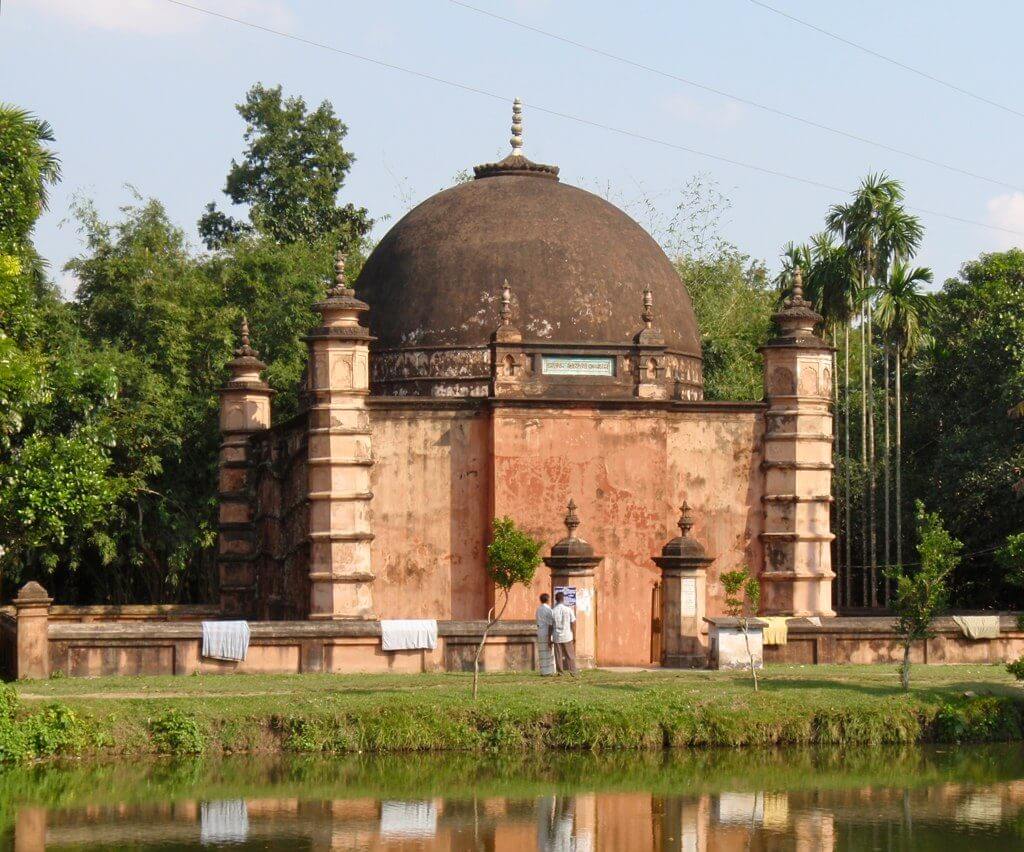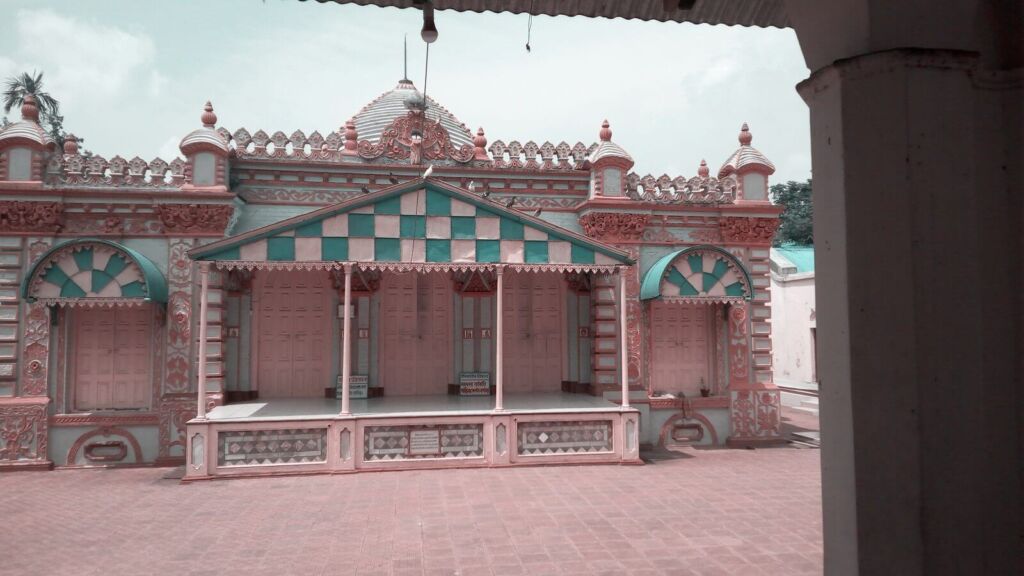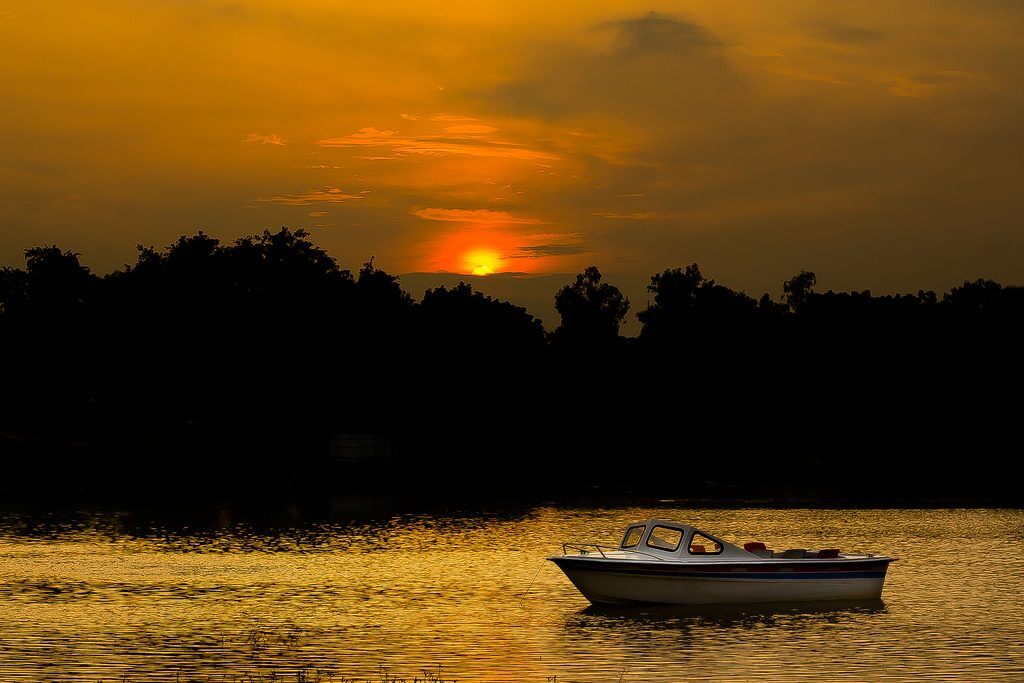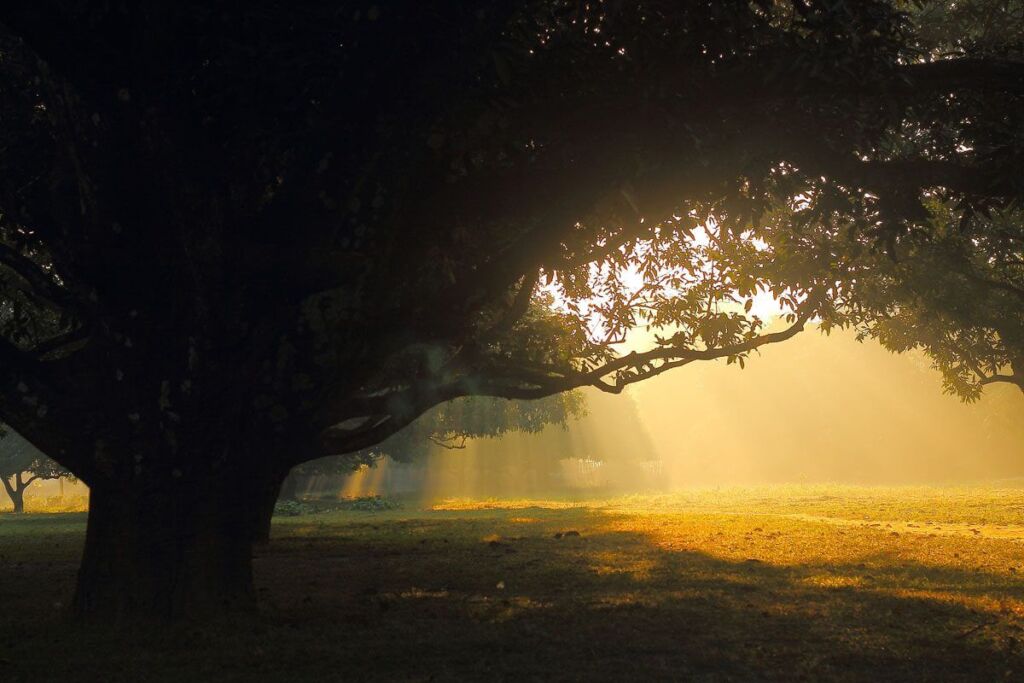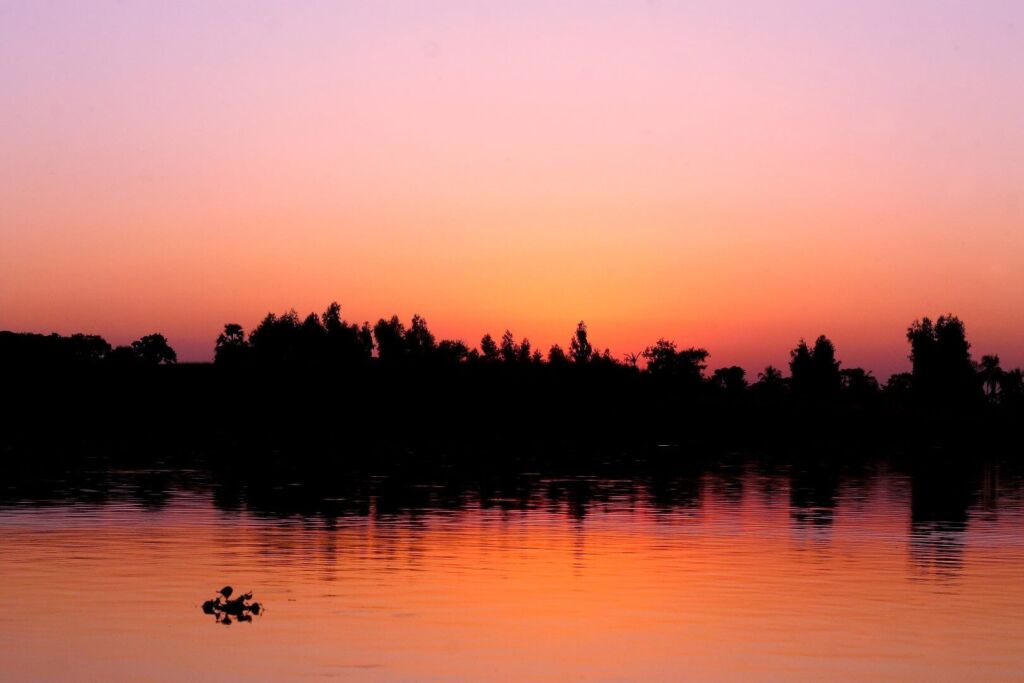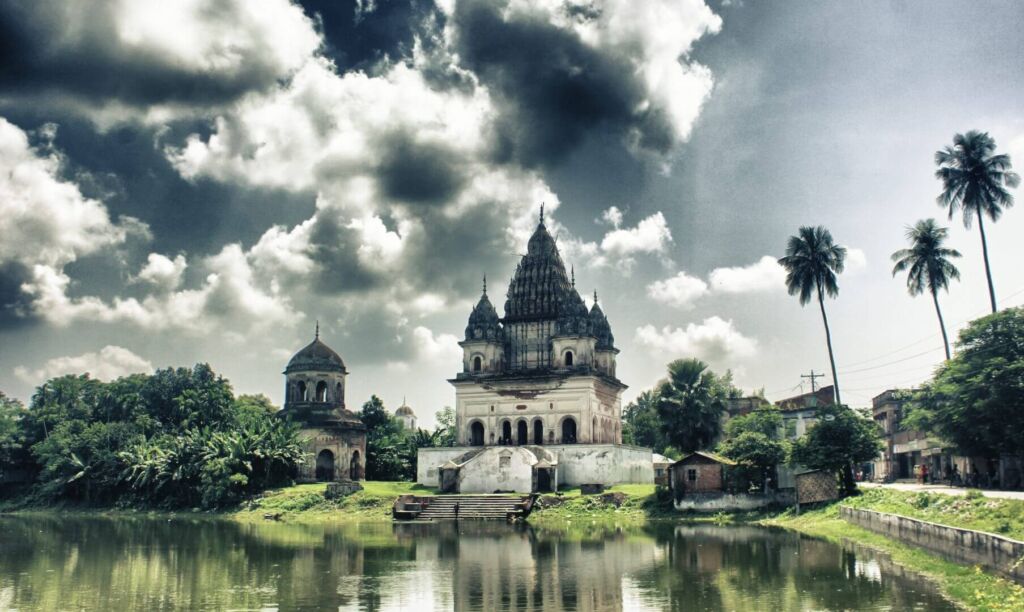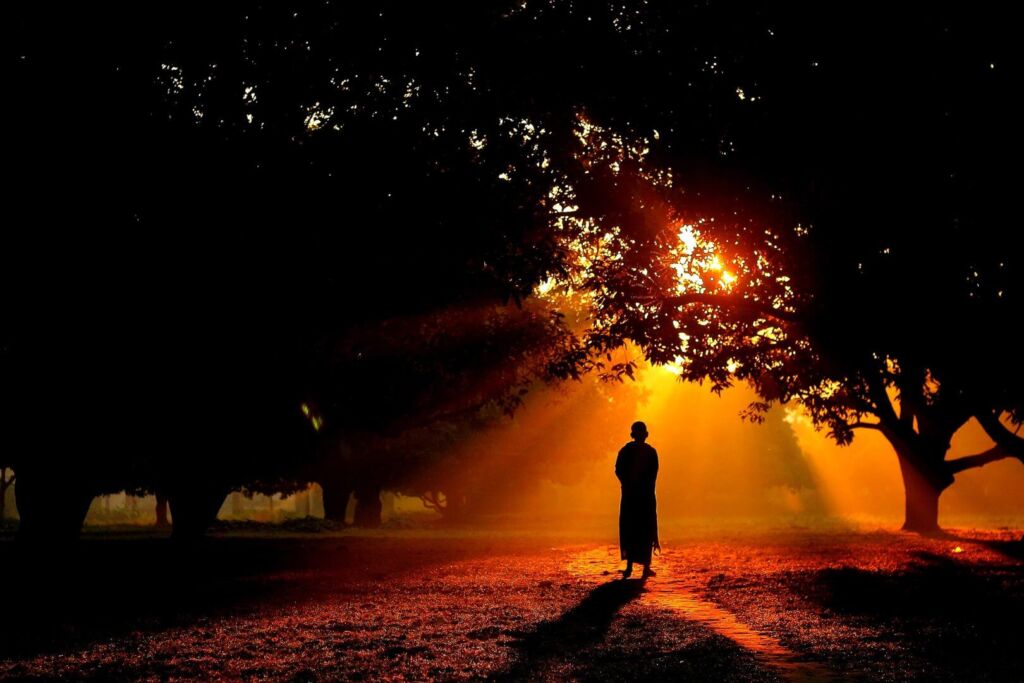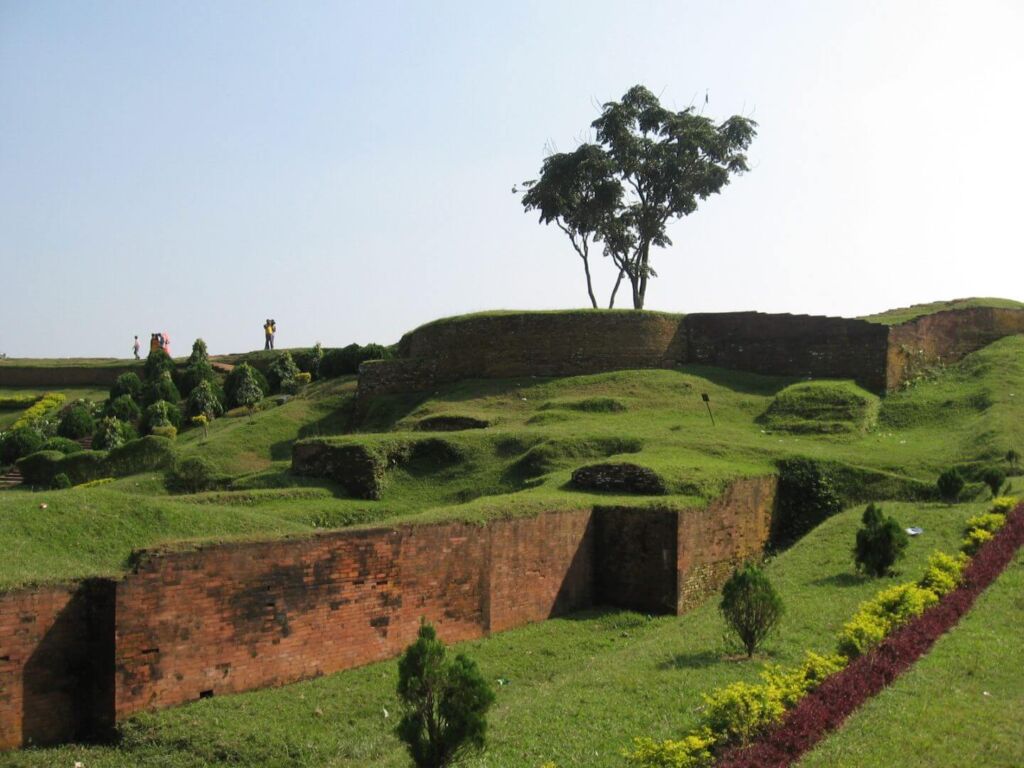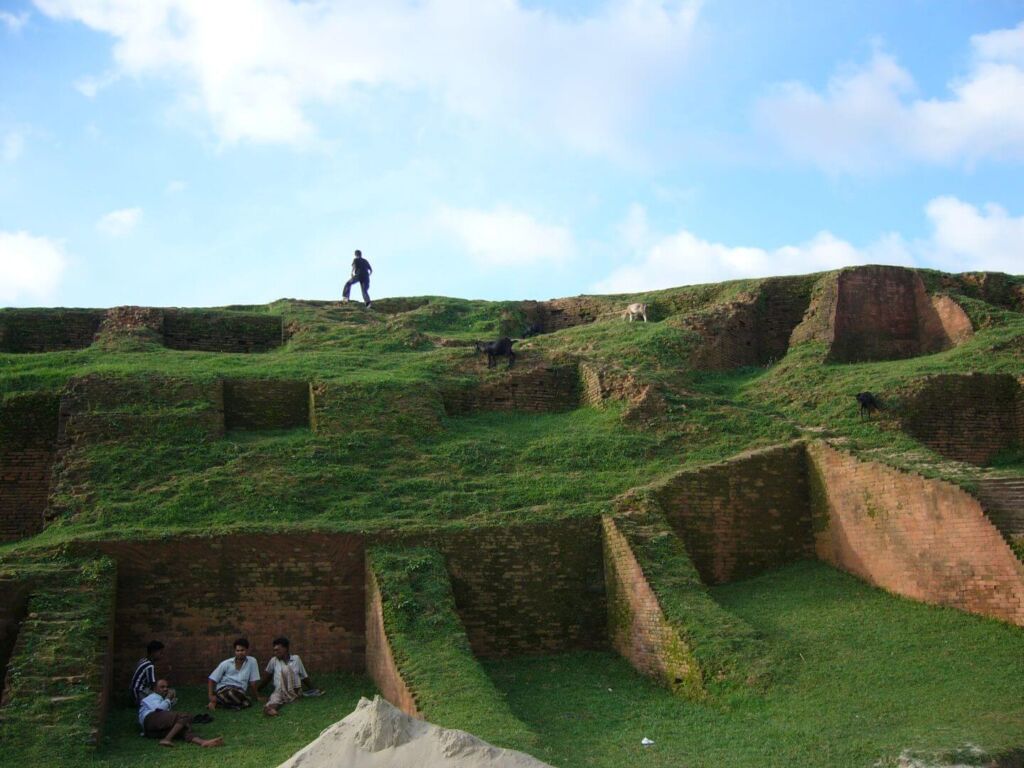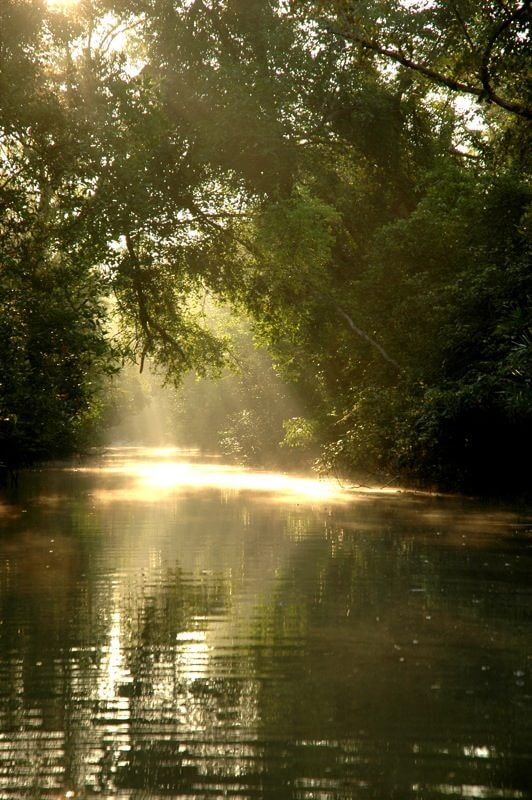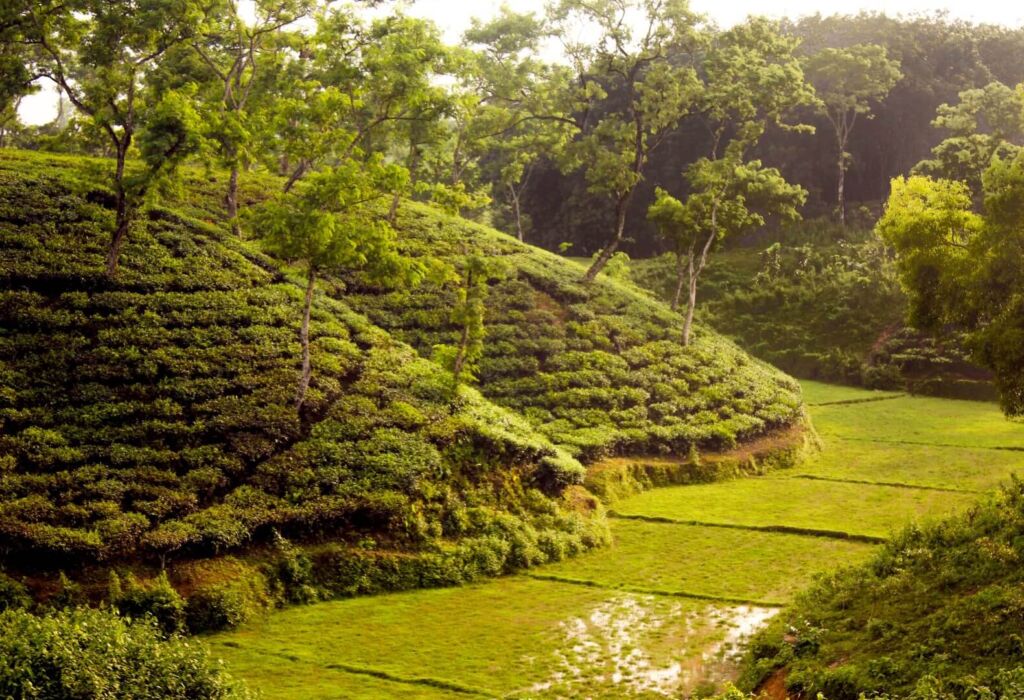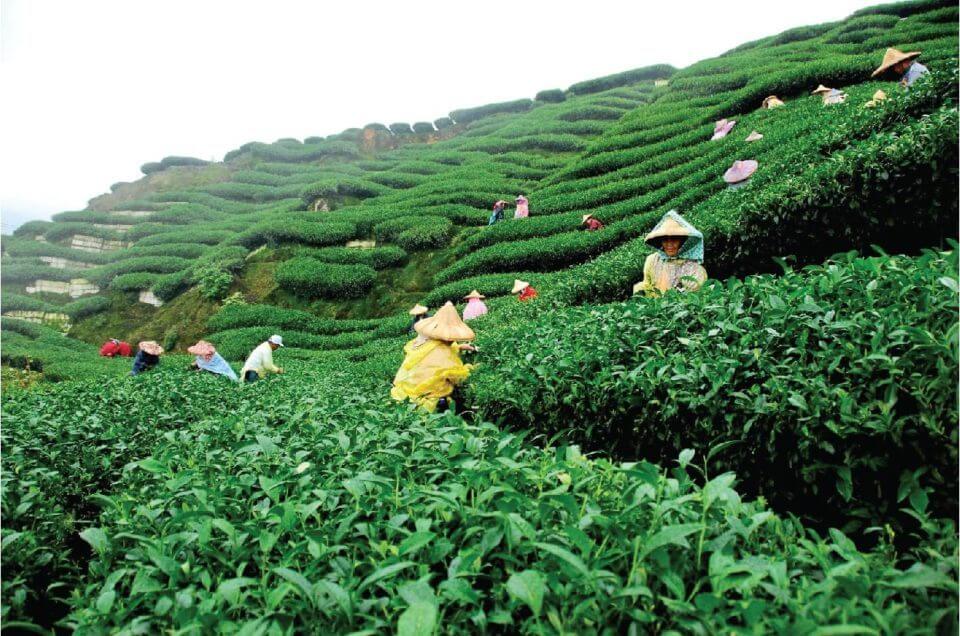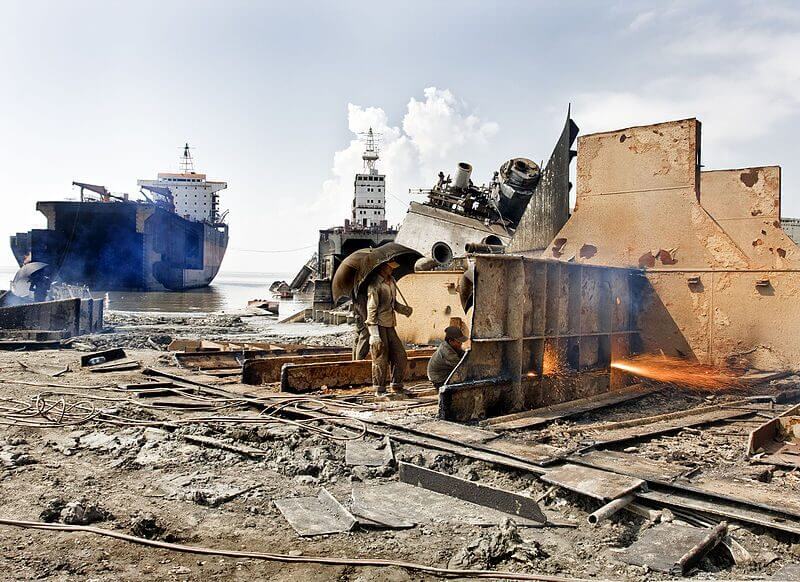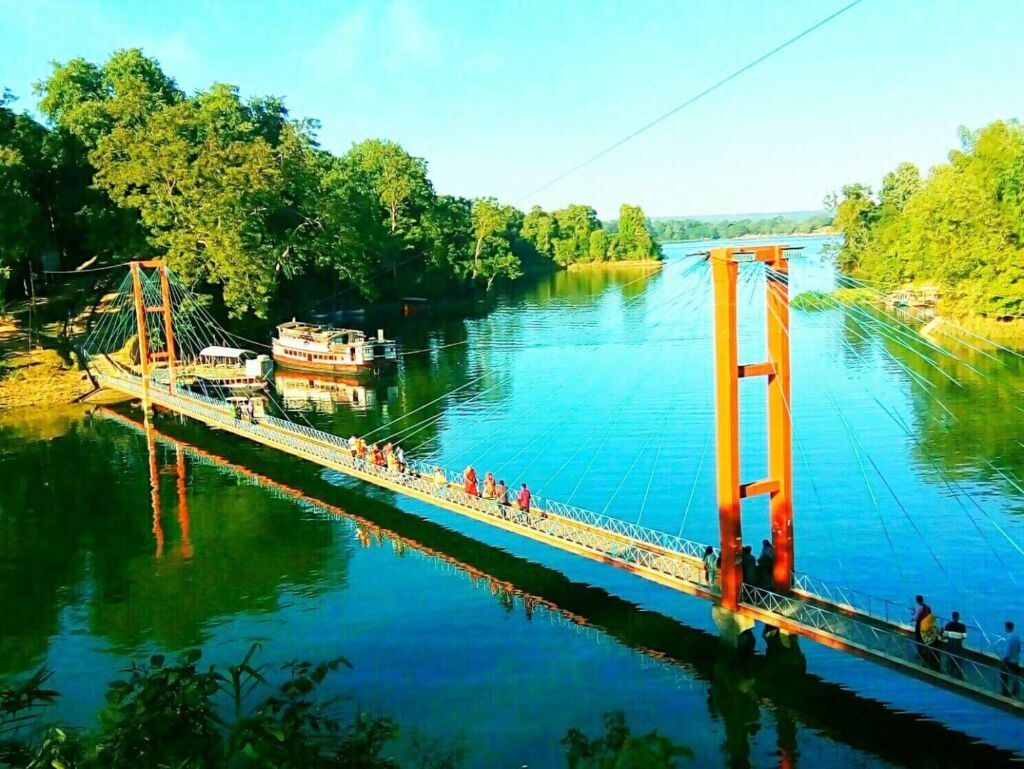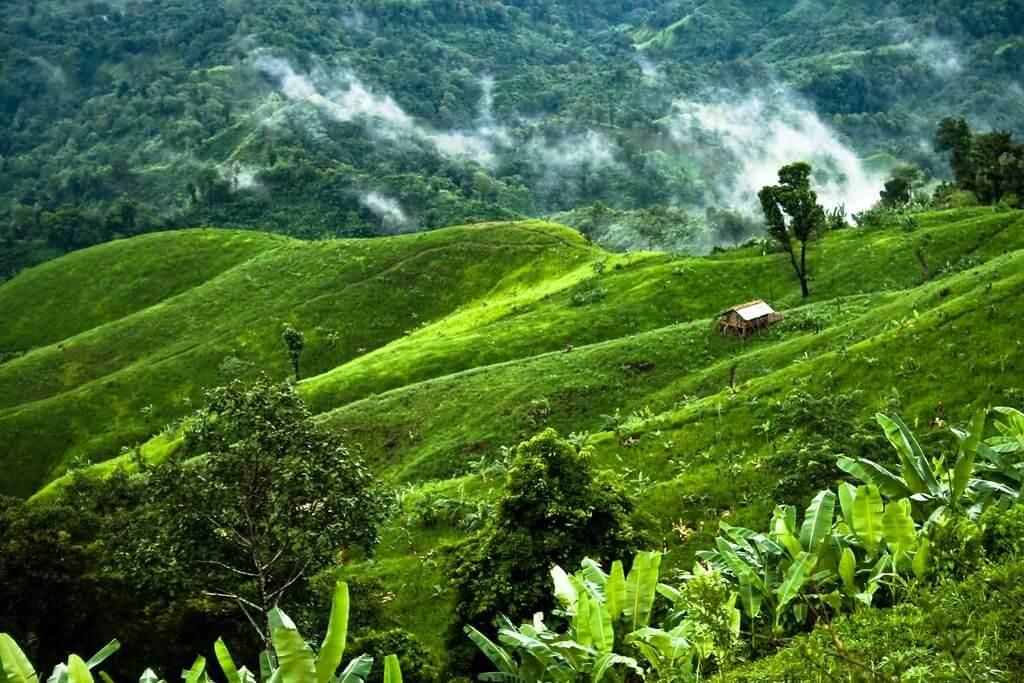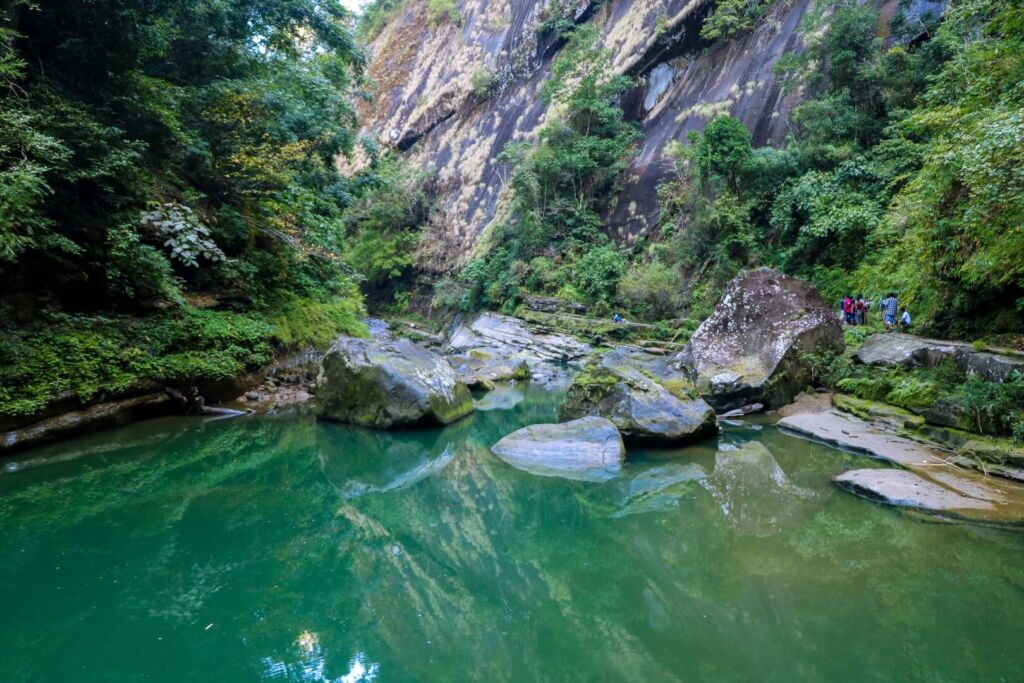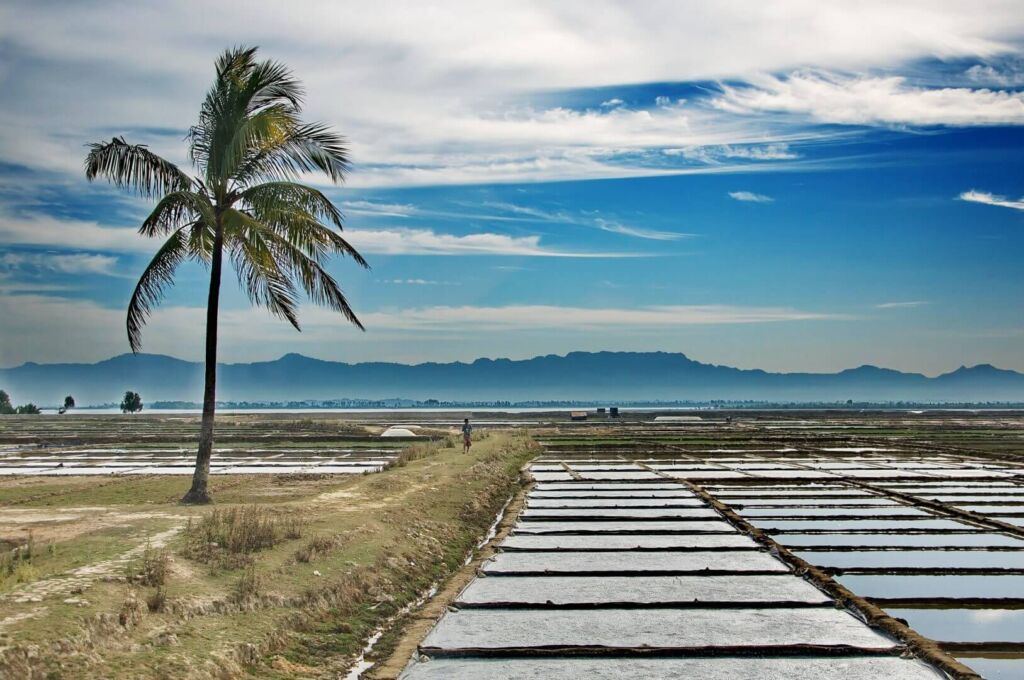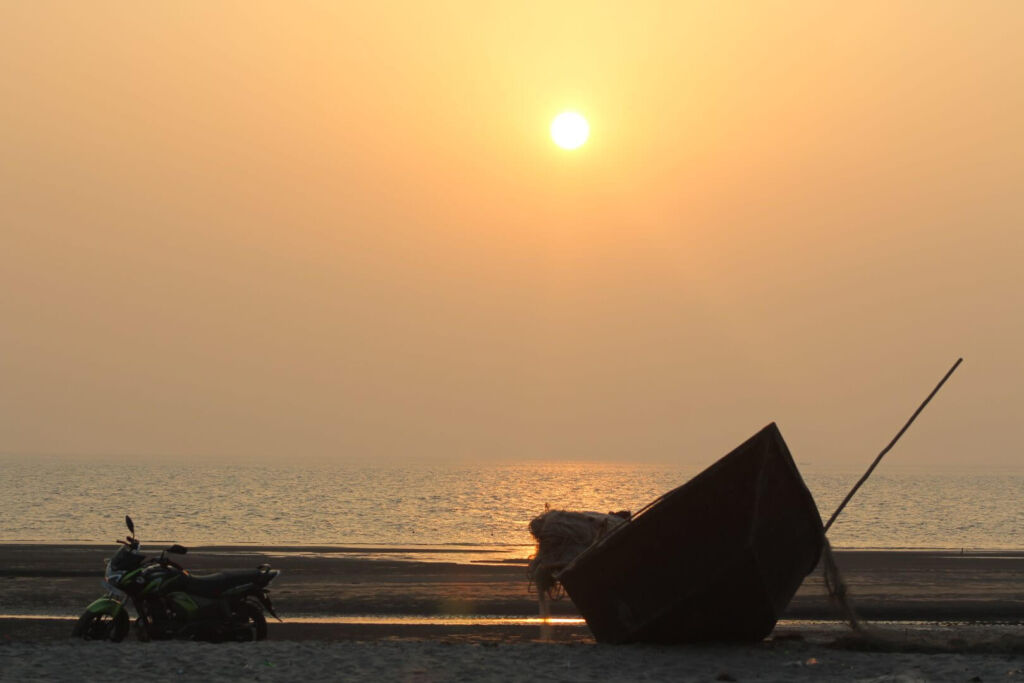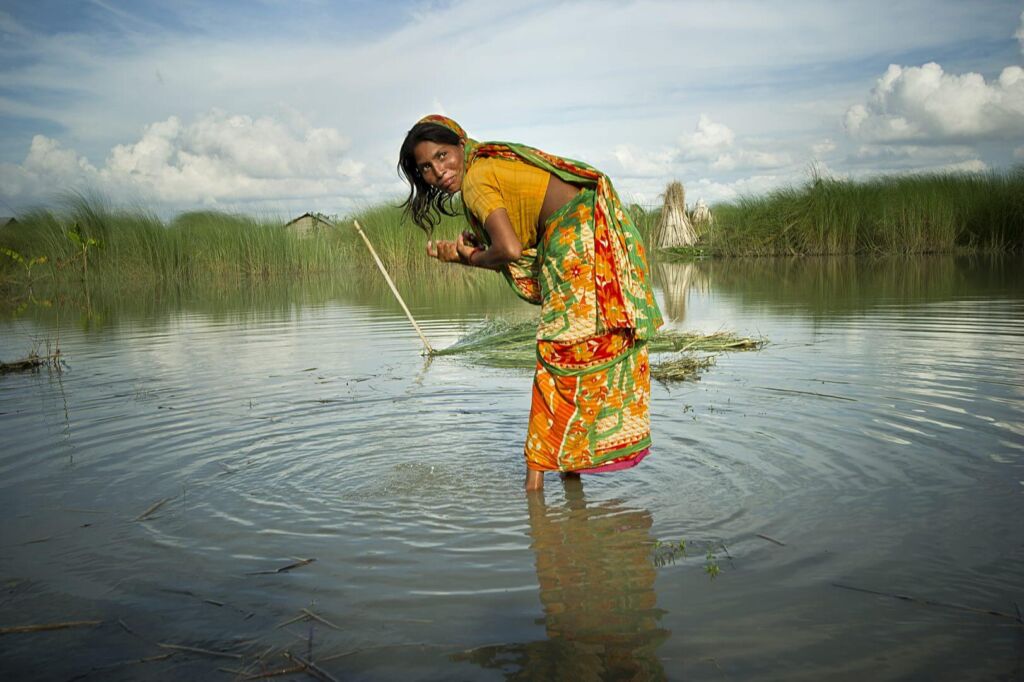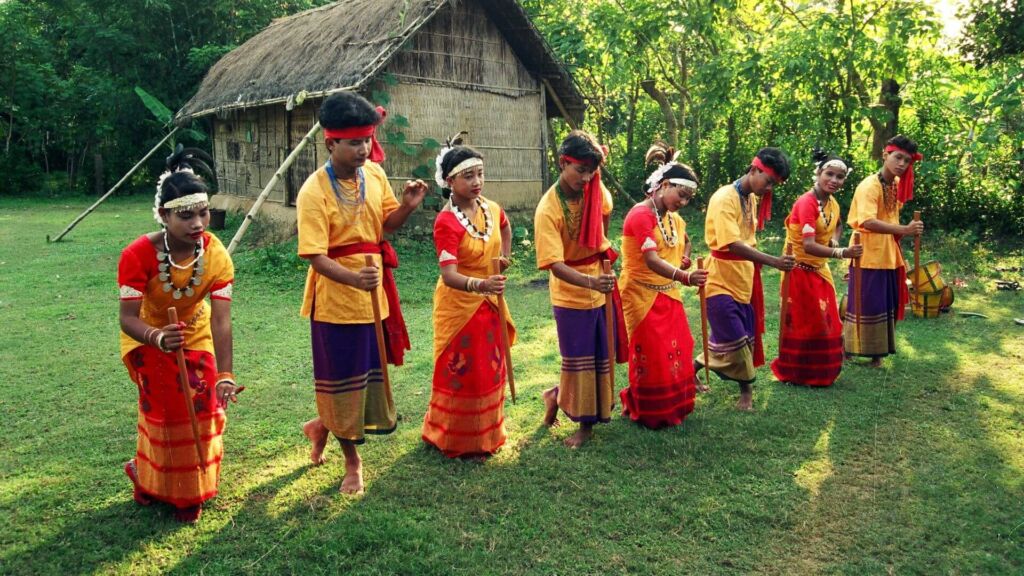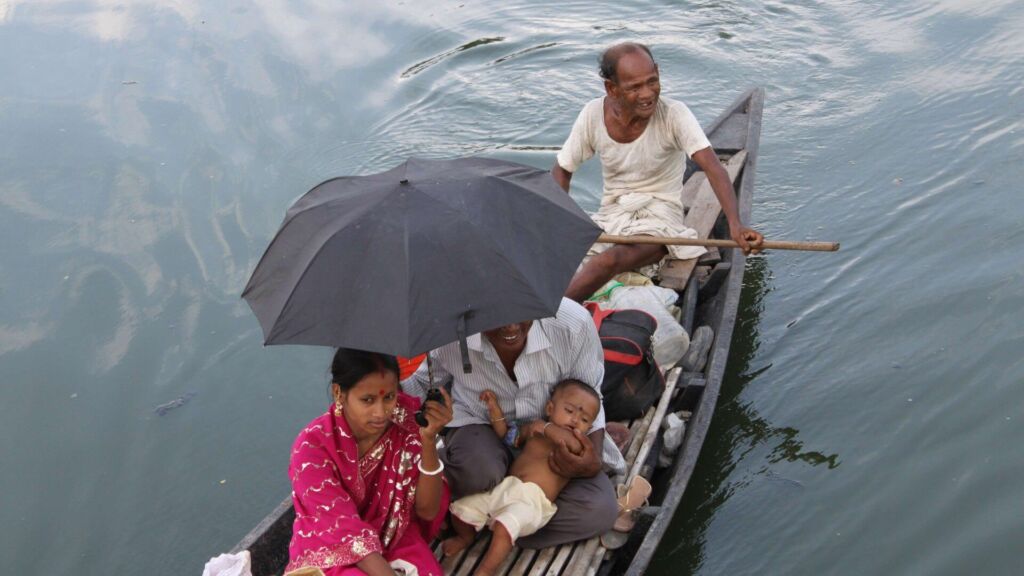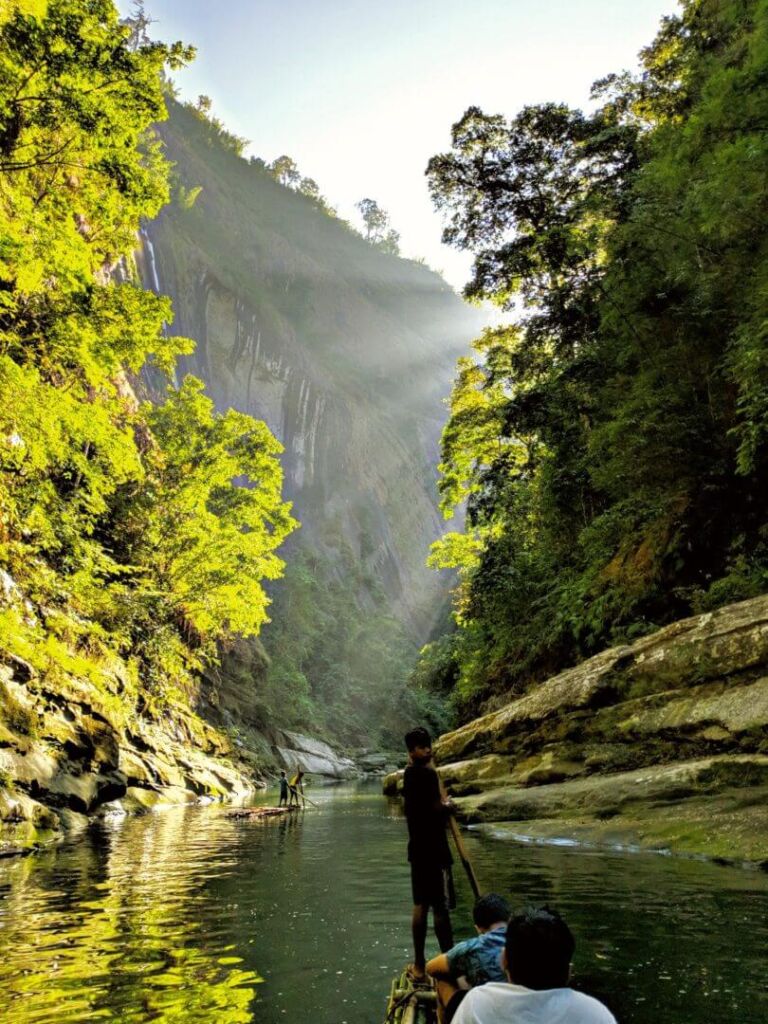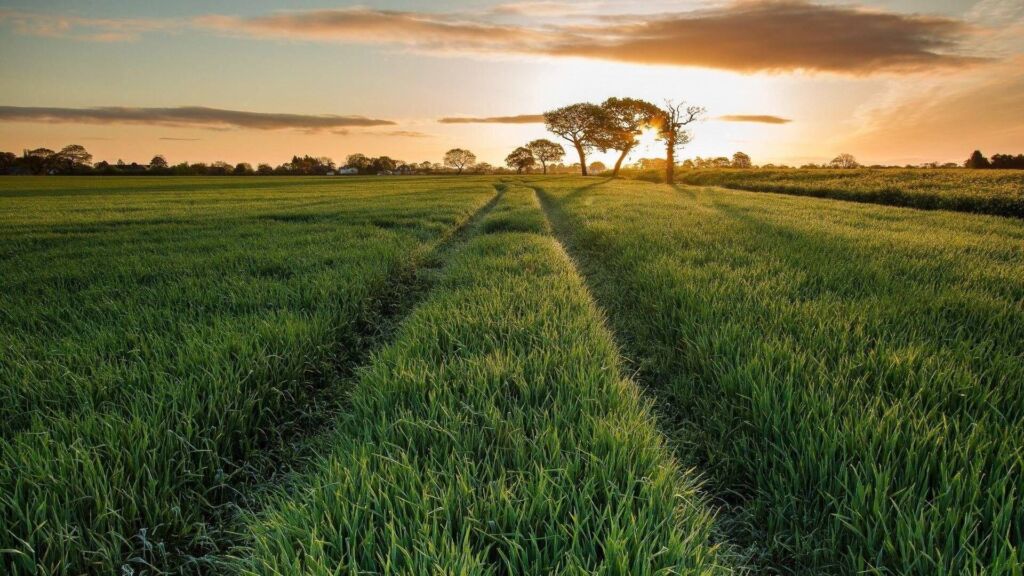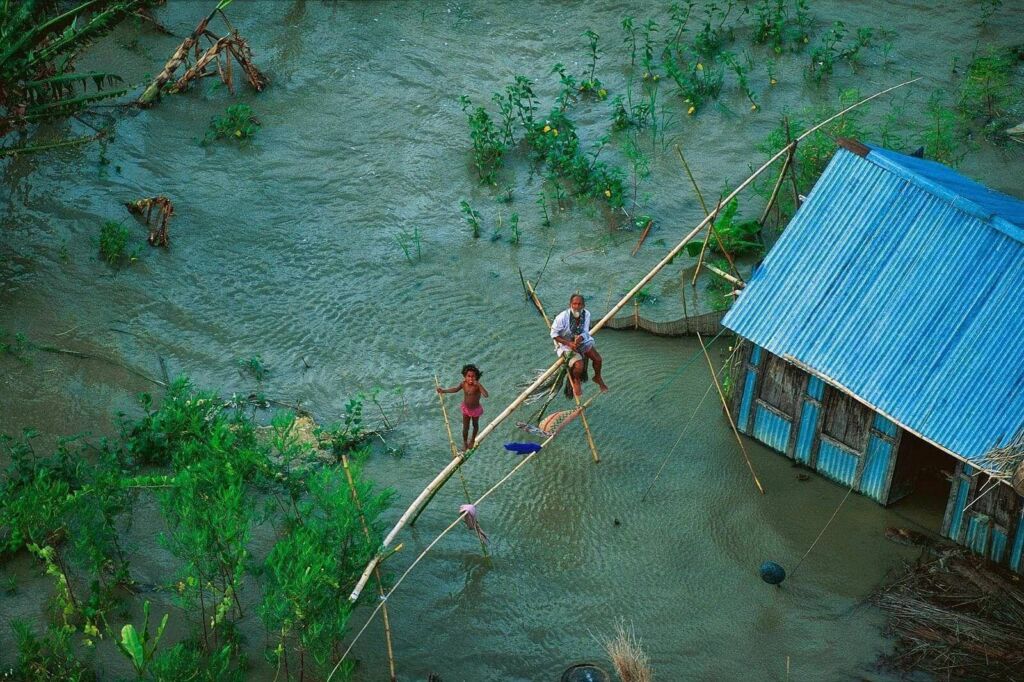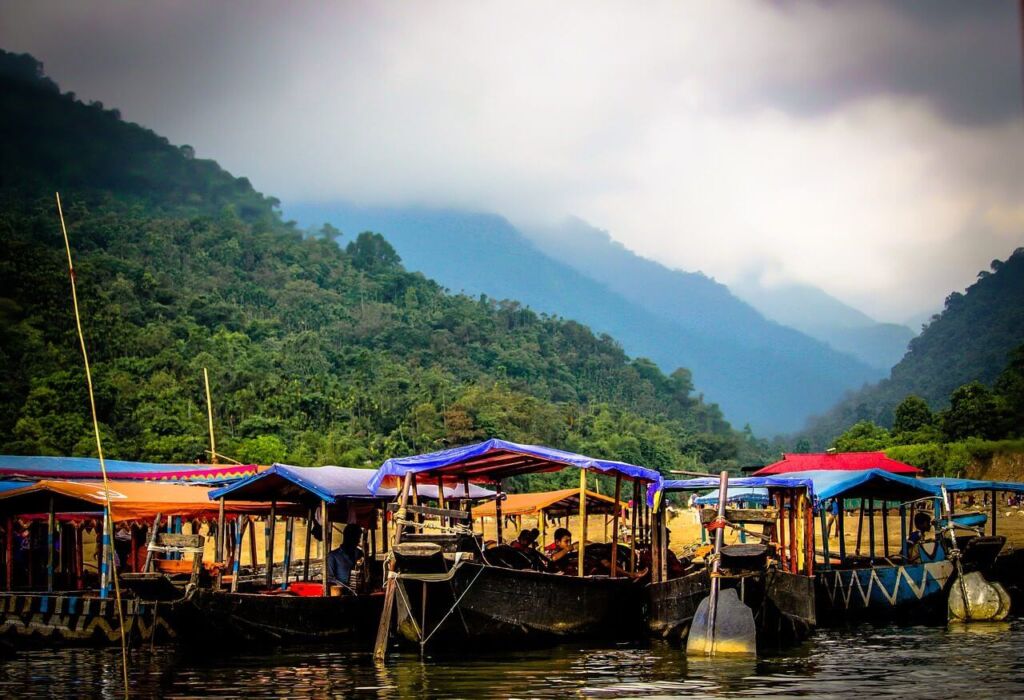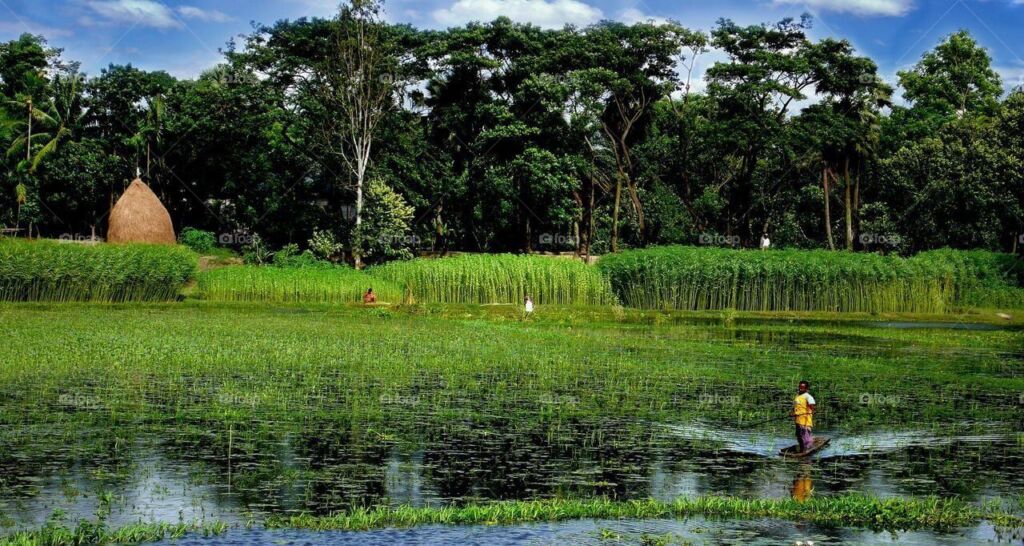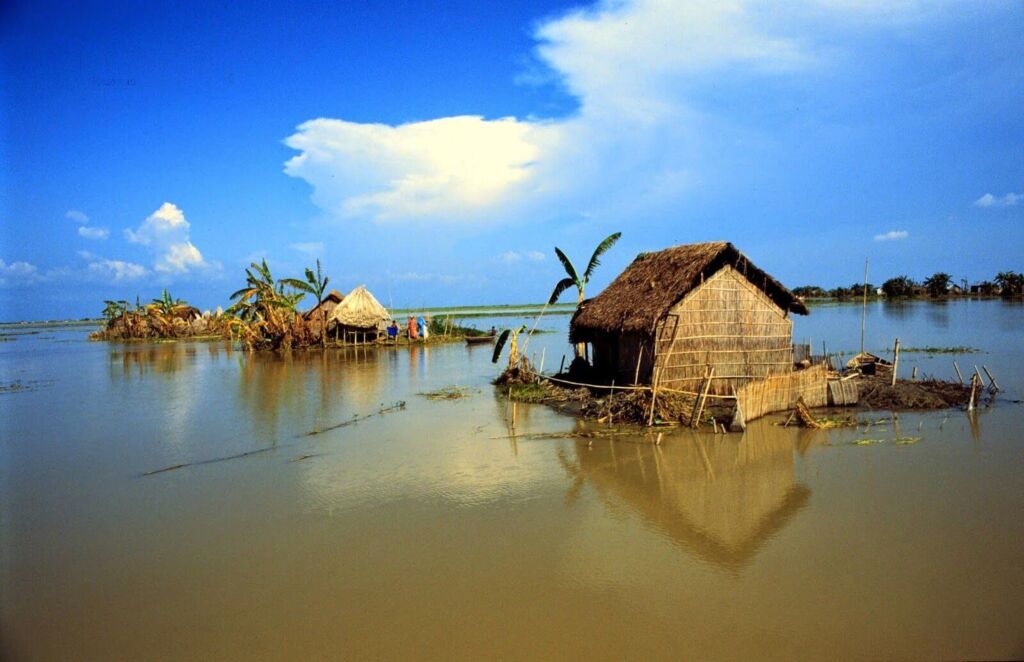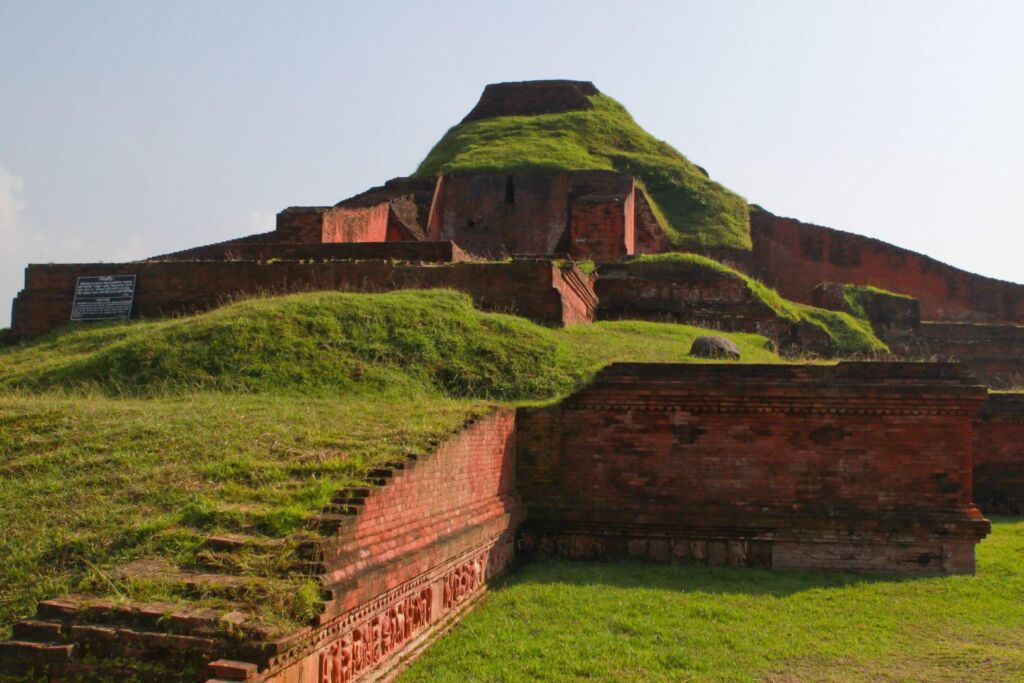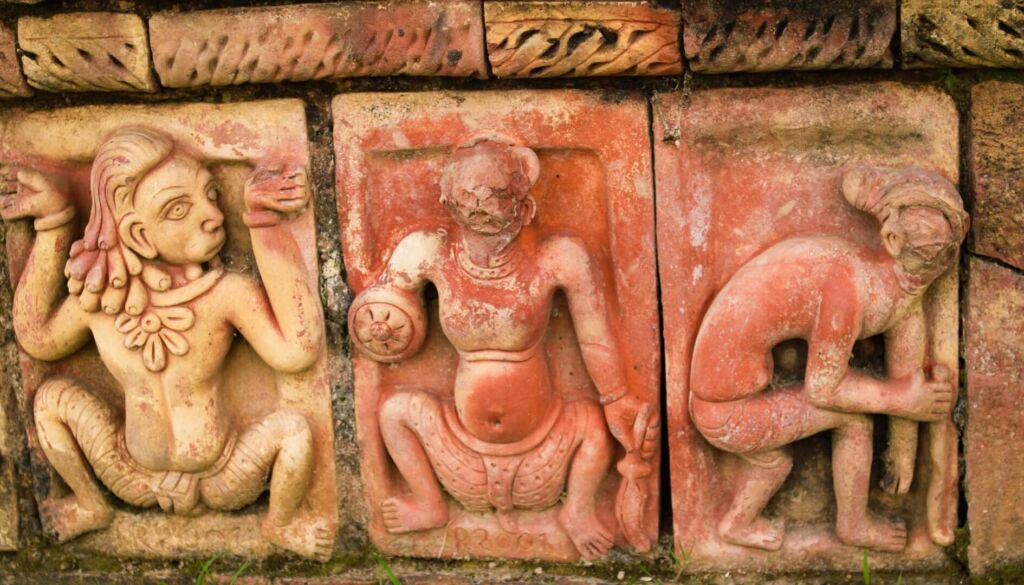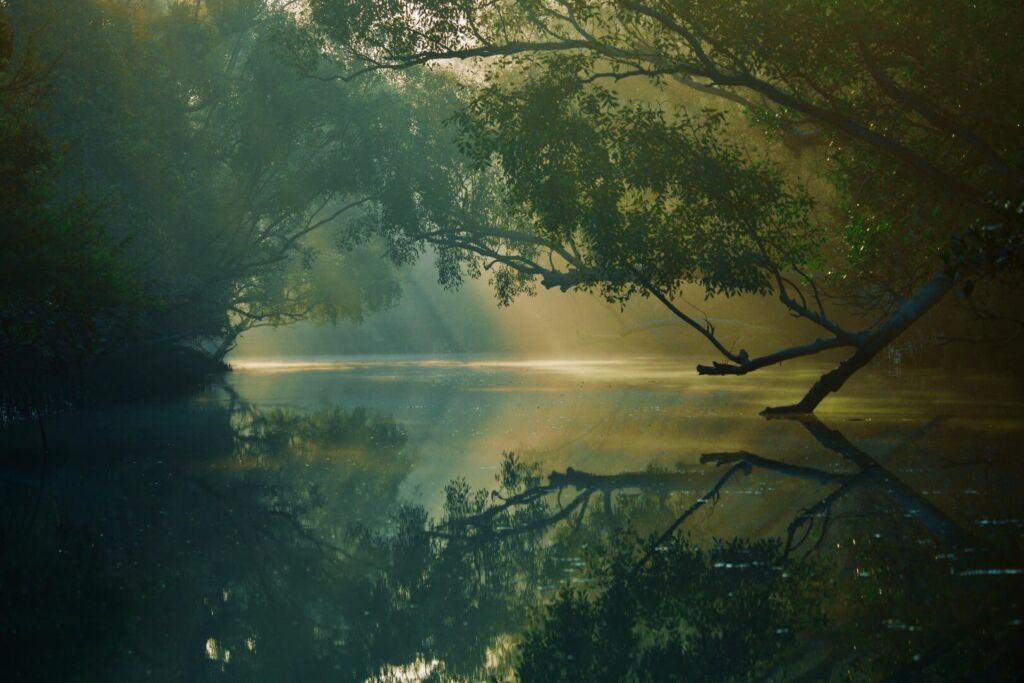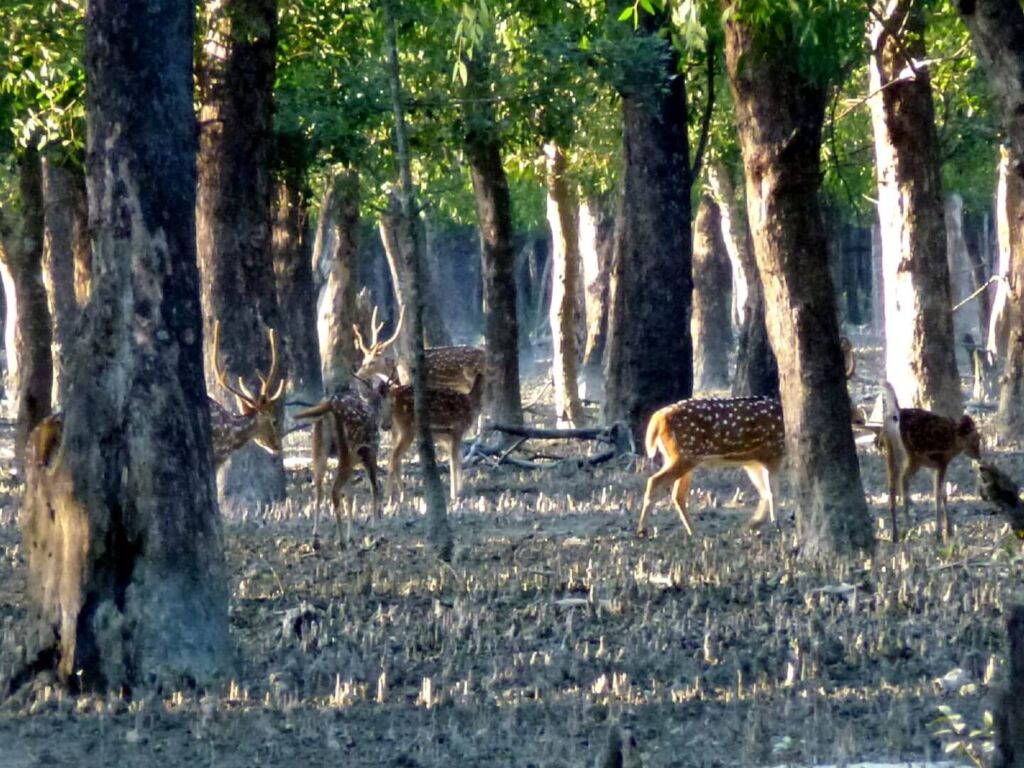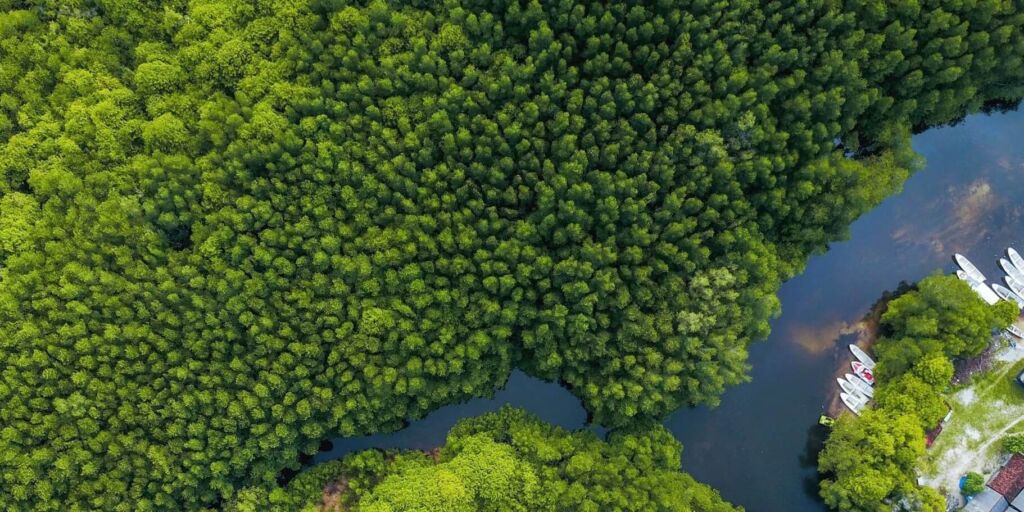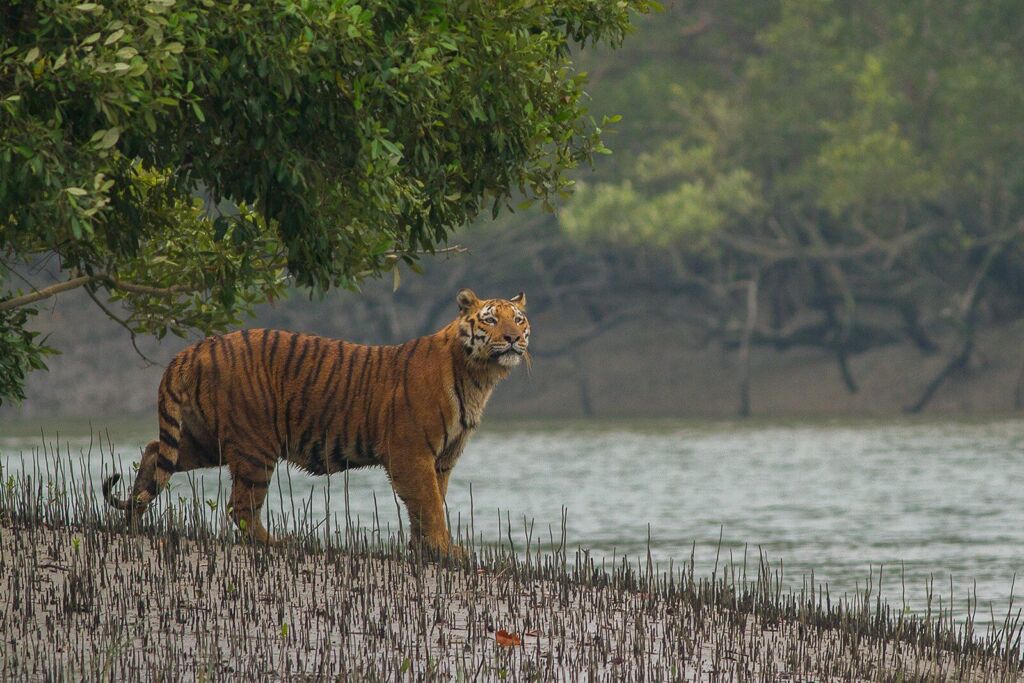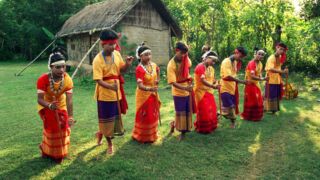Bangladesh will not be known to many people as a travel destination. This little-discovered country has a lot to offer the curious traveler on a journey: from the fascinating life along the rivers to rustic farming villages with ancient temples and palaces from bygone times; from intensely green tea fields and dense rainforests to colorful hill tribes and their markets in the forested hills against the Burmese border.
On this individual trip, which can be completely adapted to your wishes, you start the adventure in the capital Dhaka. a dizzying cauldron full of energy and activity, where you will be short of eyes and ears to process all first impressions. Every day, some 600,000 brightly painted cycle rickshaws move like colorful waves through an endless sea of traffic… A boat trip on the Buriganga River, the heart artery of Old Dhaka, will introduce you to an unforgettable spectacle of life in this hard-working metropolis.
In the Rajshahi Division, in rural northwest Bangladesh, the cheerful colors of the bazaars and the exuberant casualness of the city dwellers alternate with sleepy villages and forgotten remnants of a rich history. Crumbling monuments such as the red sandstone Hindu temple of Kantanagar, the Buddhist monastic ruins of Paharpur and the ancient citadel of Mahasthangarh bear silent witness to the mighty principalities that once thrived here in prosperity.
You will take a wonderful cruise through the beautiful mangroves and swamps of the Sundarbans in search of the Bengal tiger and other wildlife. One of Bangladesh’s most picturesque landscapes are the tea-covered hills at Srimangal, in the sparsely populated corner of the country’s northeast. Besides tea plantations, you will also find the oldest and most accessible semi-tropical forests of Bangladesh in this area, where you can enjoy the silence of nature.
Travel via cosmopolitan Chittagong, the country’s busiest port city, to the most fascinating region of Bangladesh, both scenically and culturally. In the Chittagong Hill Tracts, the forested mountain area that stretches along the Burmese border, tribes such as the Chakma and Marma still lead a life of their own, separate from the laws and regulations of the rest of the country. For a long time this special, predominantly Buddhist area was closed to tourism, but recently visitors are slowly being admitted.
Charming Rangamati is the main town of the region and is situated on a number of small islands in the picturesque Kaptai Lake. A boat trip to the tribal villages on the tropical green shores of this lake is an undisputed highlight of your visit, especially on market days.
At the end of the trip a day to relax on the island of St. Martin’s with its swaying palm trees.
Short Itinerary for your Bangladesh Trip
Day 1 arrival Dhaka
Day 2 Dhaka
Day 3 Tangail
Day 4 Day train to Dinajpur
Day 5 Bogra
Day 6 Rajshahi through Natore and Puthia
Day 7 Rajshahi
Day 8 Mongla / Sundarbans
Day 9 Sundarbans
Day 10 Gopalganj
Day 11 Manikganj
Day 12 Sreemangal
Day 13 Sreemangal
Day 14 Chittagong
Day 15 Rangamati
Day 16 Cruise Kaptai lake
Day 17 Bandarban
Day 18 Teknaf
Day 19 St. Martin’s Island
Day 20 Cox’s Bazar
Day 21 Flight to Dhaka
Day 22 Departure Dhaka
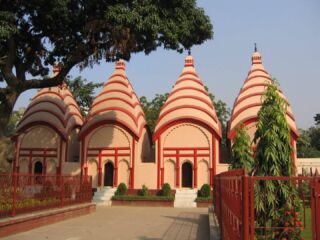
Day 1 arrival Dhaka
You will be awaited by our team at Dhaka airport and be transferred to your hotel. You will have the time to take some rest before you make your first acquaintance with the capital in the afternoon/evening depending on your time of arrival. You will visit the Lalbagh Fort, a 17th century Mughal palace that today is an oasis of calm in the middle of the city. Particularly popular as a meeting point for local youth.
Although the majority of the population is Muslim, there is also room for a Hindu temple: the Dhakeswari Temple. A first acquaintance ends in the Newmarket shopping complex. Everything is for sale here and there is a cozy atmosphere. On the top floor, the textile department is very colorful and photogenic. Here the cloths and rugs are still old-fashioned with blocks provided with their pattern.
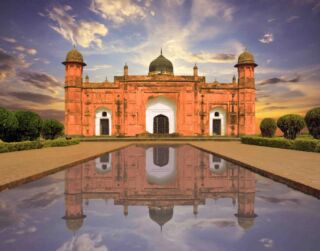
Day 2 Dhaka
Today you will get to know this immense city, which is bustling with life. Dhaka is a chaotic city full of people and endless rows of rickshaws, cars, taxis, mopeds, bicycles, street vendors, etc. The ‘rickshaw capital of the world’ does cause countless congestion; be patient and be amazed at how everyone finds their way. Of course you will visit Sadarghat today, where the boats come and go to bring people and goods to the other side of the river. We will take a boat trip on the impressive Buriganga River, the bustling lifeline of the city, to see it all up close. Also on the program are the Star Mosque, the Pink Palace and Hindu Street. In short, an overwhelming amount of colors and scents that the Indian subcontinent is so famous for.
Day 3 Dhaka – Tangail
After visiting the busy city, today you will explore the countryside. We drive to the village of Tangail, located a short three-hour drive from Dhaka. Here we spend the night in a guesthouse of the organization Ubinig that, in addition to supporting sustainable agriculture, also sets up community-based tourism projects to support the villagers of Bangladesh in their livelihood. In the village you will learn more about the activities of this organization and about village life. You can see how various crafts are still performed in the traditional way. The bicycle is ideal for such a ride through the countryside (if available at the time).
Day 4 Tangail – Dinajpur
In the morning we’ll go to Dinajpur by train. Along the way, you can feast your eyes on the train and the surrounding landscape. After traveling for about eight hours we will arrive in Dinajpur.
Day 5 Dinajpur – Bogra via Kantanagar and Paharpur
In the morning we will go to one of the most special Hindu temples in the country, the Kantanagar Temple, built in 1652 by the Maharaja of Dinajpur. The temple is an hour’s drive away and is one of the finest examples of the terracotta architecture that was so common in Bangladesh. The walls of the complex have beautiful images of gods, people, animals and floral motifs. The makers had a special fantasy resulting in special sculpture. We then continue to Joypurath for a stop for lunch.
Then we will visit one of the cultural highlights in the northwest of the country: Paharpur. This Buddhist monastic complex dates back to the time of the Pala dynasty (7th to 12th century). The ruin complex is beautiful and peaceful in a rural setting and was the largest Buddhist building south of the Himalayas. Larger than, for example, Borobudur in Indonesia.
Day 7 Rajshahi
You will visit the area around Rajshahi and the mosque of Choto Sona, located near the border, the Darasbari mosque and Madrasa and the Khonia Dighji mosque. Afterwards we will make a lunch stop in Chapai Nawabganj, to then return to Rajshahi and visit the Barendra research museum. Rajshahi is an important silk production center on the border with India and there is the possibility to view a silk factory and get a closer look at the process from caterpillar to silk. In the evening we can take a walk along the Padma River.
Day 8 Rajshahi – Mongla / Sundarbans
Early in the morning we’ll drive for about four hours to Kushtia. Here we will visit the mausoleum of Lalon Shah and the home of the famous poet Rabindaranath Tagore. Of course time is made to attend a music performance. After lunch, we’ll drive to Mongla, another long 7-hour drive. In the evening you will board the boat to start the cruise through the Sundarbans.
Day 9 Sundarbans
The Sundarbans is the world’s largest mangrove forest. You will find an exotic animal world here, including the Bengal tiger. The Sundarbans even has the highest tiger density of any national park in the world. Nearly 10% of the tigers living in the wild live in the Sundarbans, where they are notorious for regularly devouring people who live here! In addition to tigers, there are more than 300 bird species, otters, monkeys, crocodiles, deer, boars and river dolphins. Along the way during the boat trip we can get off several times and take walks.
The boat takes us through the major rivers and the smaller canals. Early in the morning we will take a trip on a small boat to sail through the smaller canals. Today you will also take a walk through the jungle. The rest of the day the boat sails through the Sundarbans towards Chandpai.
Day 10 Sundarbans – Gopalganj via Mongla and Bagerhat
In the morning you wake up in the Sundarbans and visit a fishing village. Then you will sail back to Mongla. After lunch, drive an hour or two to Bagerhat, the country’s mosque-city. This town, which is protected by UNESCO, has several special mosques from the Middle Ages. The most special and beautiful is the so-called ’60-domed mosque’; this Shai Gumbad mosque actually has 77 domes and looks like a fortified fortress. We will also visit the mausoleum of Khan Jahan Ali and several other 15th century mosques such as the 9-domed mosque and smaller 1-dome mosques. The mosques are located in a beautiful rural area and because there are many pilgrims, there is always something to do.We’ll then go to Gopalganj where we’ll stay overnight.
Day 11 Gopalganj – Manikganj
We’ll continue your journey through Bangladesh to Manikganj and will arrive around lunch time. We will spend the night in a guesthouse. In the afternoon we can visit some villages of the woodworkers.
Day 12 Manikganj – Sreemangal
A travel day that takes you to Sreemangal, the ‘tea capital’ of Bangladesh. The city is located in the middle of the hills, one of the most beautiful landscapes in the country. We will visit the Lowacheera Forest reserve and of course several tea plantations. We’ll spend the night at one of those tea plantations.
Day 13 Srimongali
In the morning we will drive to the Lowacherra Forest reserve. Here we will take a walk through the jungle and visit a village of the Khastia and Tripura tribe. In the afternoon you will meet the Monipuri tribe and will visit a village and learn more about the life of these ‘hilltribes’.
Day 14 Srimongal – Chittagong
After breakfast, we travel to Chittagong. On the way you will visit a war cemetery, a Buddhist monastery and we will have lunch in Comilla. In the evening we’ll arrive in the port city of Chittagong. In colonial times most British in all Bengal except Kolkata lived here.
Day 15 Chittagong – Rangamati
In the morning you will visit Chittagong and the harbors where shipwrecks are dismantled; an impressive sight to see giant ocean tankers being disassembled with bare hands. In the afternoon we go to Rangamati, located on Lake Kaptai. Here we can visit some Buddhist temples and monasteries. Rangamati is one of the most popular holiday destinations for Bengali and for good reason; it is beautifully situated on the Kaptai lake.
Day 16 Rangamati / Kaptai Lake Cruise
We take a boat trip on the Kaptai Lake and cruise through a gorge to visit Subalong and meet some of the tribes on the islands in the lake. One such tribe is the Chakma, who also run a small restaurant where you have lunch. At the end of the afternoon, we will return to Rangamati where we can visit the local market.
Day 17 Rangamati – Bandarban
The Arakan Highway continues south through the hills of the Chittagong Hill Tracts to the tribal market town of Bandarban, a four hour drive. Here we can stroll through the town with its market, Golden Temple and Lake Meghla.
Day 18 Bandarban – Teknaf
In the morning we explore the area by 4×4 and visit the village of Marma and the Chimbuk hill. You will visit villages of the Burmese-like tribes the Murong and Bawn.
In the afternoon we’ll drive further south to Teknaf, a six hour drive. Teknaf is the southernmost gateway to the country and border town with Burma.
Day 19 Teknaf – Saint Martin’s Island
In the morning we take the ferry (three hours) to Saint Martin’s Island, a small tropical paradise surrounded by coral reefs. There are no roads, rickshaws, cars, just palm trees, fish markets, beaches and a few turtles.
Day 20 Saint Martin’s Island – Cox’s Bazar
In the morning you can relax on the island, before we take the ferry back to Teknaf in the afternoon. Once we have arrived, we’ll continue to Cox’s Bazar, a three-hour drive away.
Day 21 Cox’s Bazar – Dhaka
In the morning we will visit the town of Cox’s Bazar, the Burmese market and the fish market. In the afternoon we’ll fly back to Dhaka.
Day 22 Departure Dhaka
One last day in Dhaka before we go to the airport for the return flight home.


